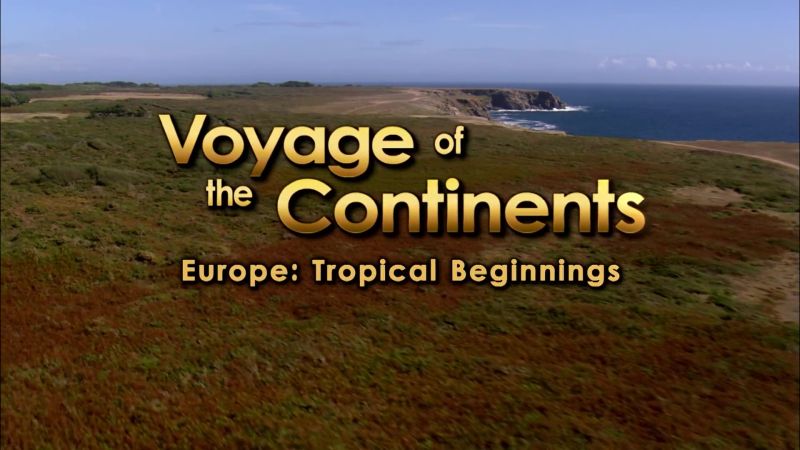Voyage of the Continents episode 4: Europe’s geological history is mysterious. Continent was constructed out of three massive collisions by what was to become America, Asia and Africa. Born of three massive tectonic collisions the continent has been transformed many times. Each impact caused cataclysms on a tremendous scale, creating a world of chaotic forms and bright colours. Over time, mountain chains that were even higher than the Himalayas sprung up in Scandinavia and Scotland, where today the great central plains lie. After millions of years of erosion, Europe has become a sea floor. It has been invaded by unusual life forms, and some of our species have modified the very shape of the continent. These metamorphoses in time and space are part of the ceaseless voyage of the continents. In this episode we discover ancient fossils, petrified forests and go diamond hunting in the depths of the earth.
Over the many billions of years of Earth’s history, our planet has never stopped changing. Massive tectonic forces have sculpted and resculpted our world in a never-ending journey. Do you know that Scandinavia was once in the southern hemisphere? And that in the Ardennes we can find coral reefs like in the Bahamas? Or that the largest ocean in the world, the Pacific is endangered? Since its formation 4.6 billion years ago, our Earth has been subjected to forces of incredible power. Around a still hot core, the earth’s crust, driven by mantle convection movements, is in perpetual evolution, tirelessly redrawing the map of the continents and oceans.
As landmasses assemble and separate, they fuel volcanoes and spark earthquakes, building mountains and tearing valleys. They come together or separate on average by a few millimeters or centimeters per year, sometimes more. On the scale of geological time, they shape the reliefs and deep architecture of the continents. We see the Earth, eons in the making, through the eyes of geologists and other scientists.
The history of these continents is part of a “tectonic waltz” of land and sea, a concept as important for the history of the Earth as Darwin’s theory of species for the evolution of Man. Tectonics have created life– and destroyed it as well. Huge volcanoes and devastating earthquakes continue to dominate human history. This is a story of high drama and intense beauty, the interaction of geology and life. A true Voyage of the Continents.
Voyage of the Continents episode 4
Europe’s geological history is a fascinating subject that offers insights into the formation and evolution of the continent over millions of years. The continent has a complex geological history that spans billions of years, starting from the formation of the Earth’s crust to the present day.
One of the most significant events in Europe’s geological history is the formation of the Alps. The Alps are the highest mountain range in Europe, stretching over 1200 km across eight countries. They were formed over 30 million years ago as a result of the collision of the African and Eurasian tectonic plates. This collision caused the earth’s crust to buckle and fold, resulting in the formation of the Alps. Another significant geological event in Europe’s history is the formation of the British Isles. The British Isles were formed over 500 million years ago when several landmasses collided and merged. The collision caused the formation of mountains and resulted in the formation of the British Isles as we know them today.
Europe also has a rich history of volcanic activity. The most famous example of this is the eruption of Mount Vesuvius in AD 79, which destroyed the city of Pompeii. But volcanic activity has been ongoing in Europe for millions of years. The volcanic island of Iceland, for example, was formed as a result of volcanic activity on the Mid-Atlantic Ridge. In addition to volcanic activity, Europe has also been subject to significant glaciation events throughout its history. The last major glaciation event, known as the Last Glacial Maximum, occurred around 20,000 years ago and covered much of Europe in ice.




